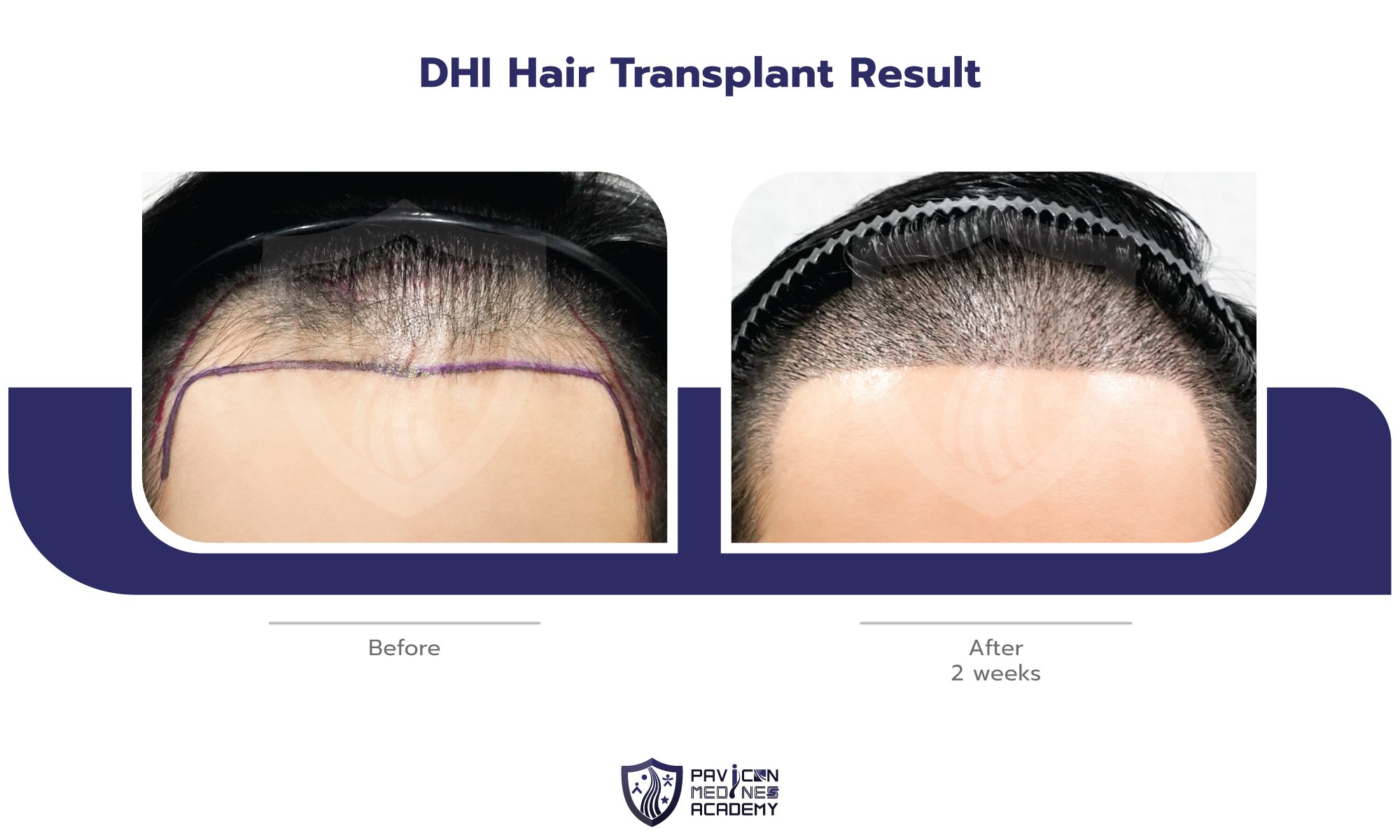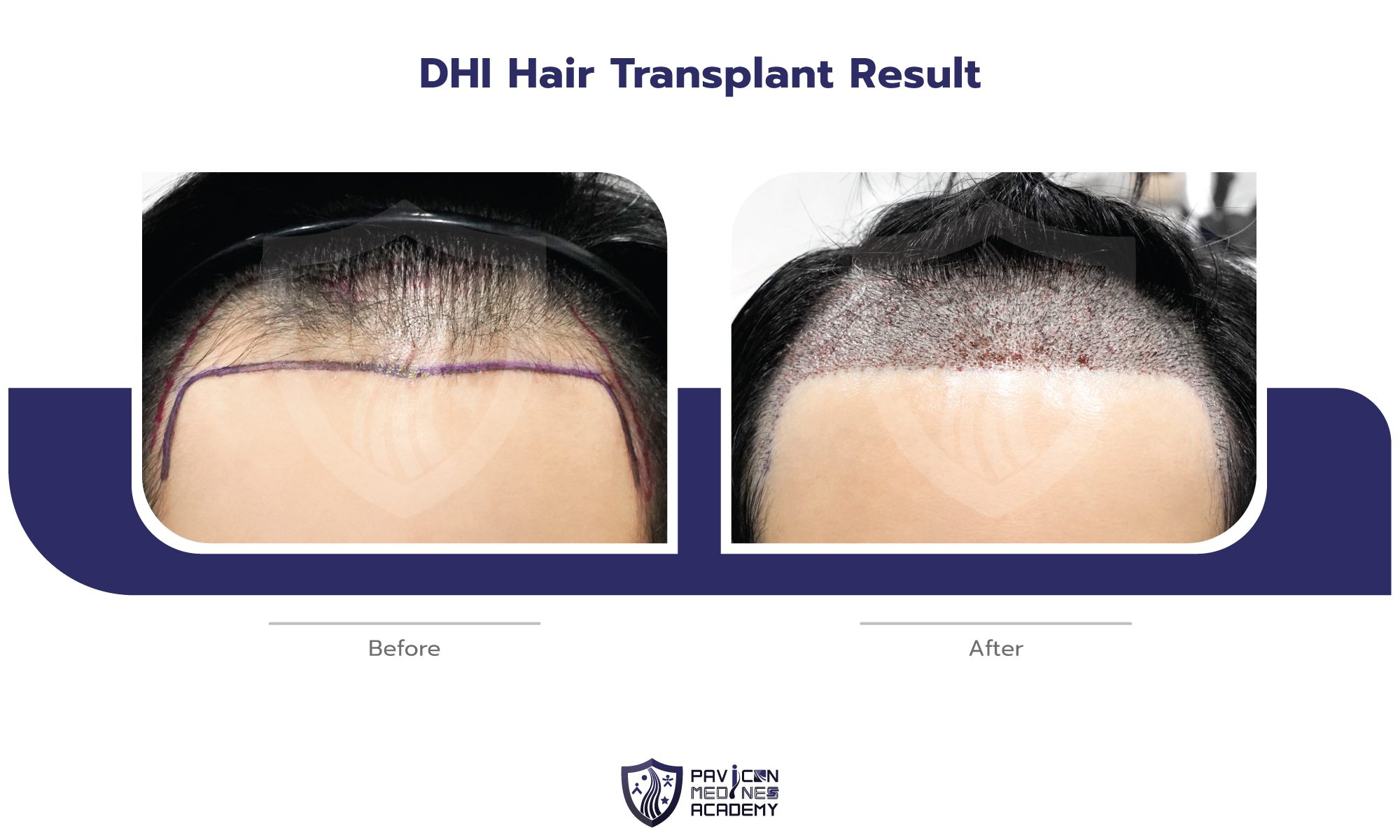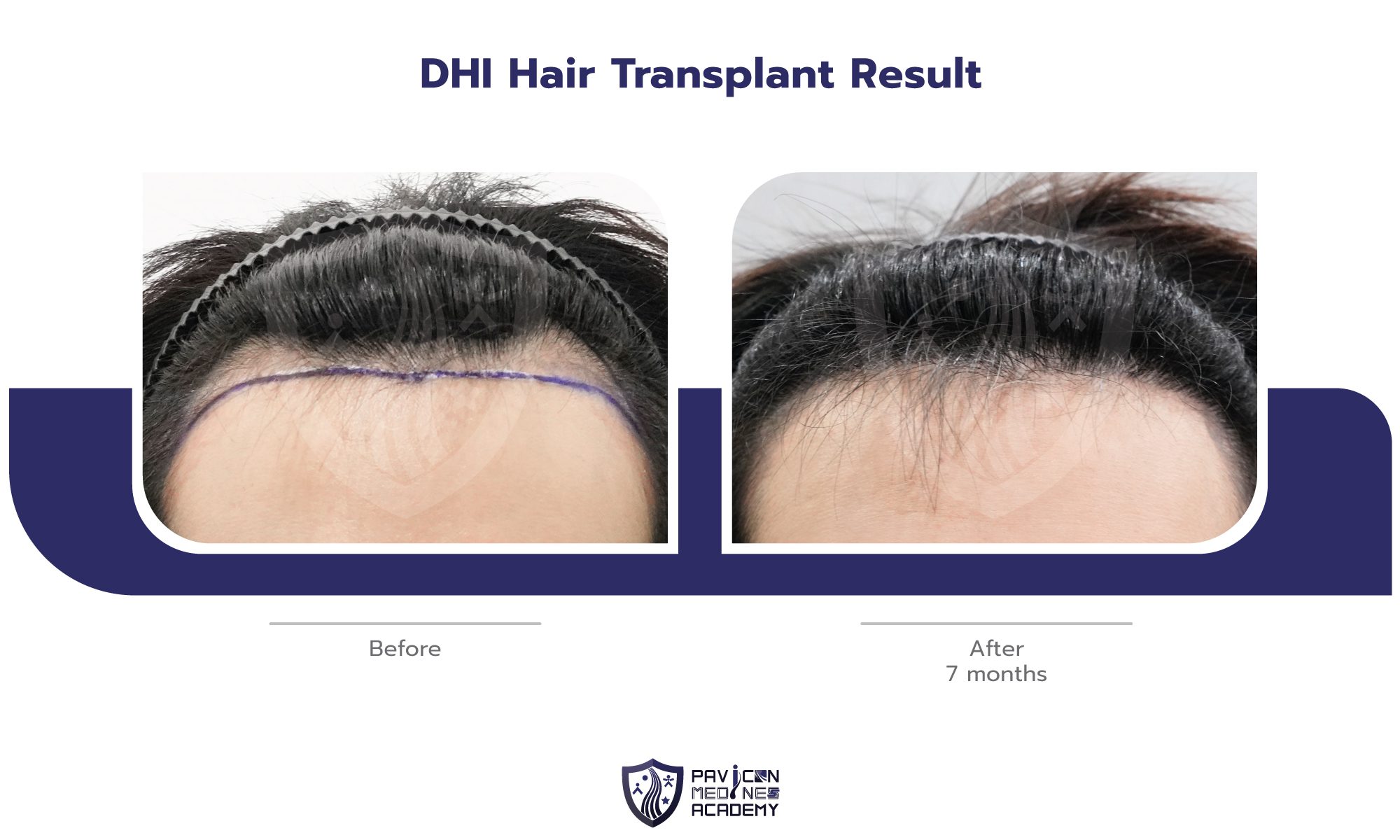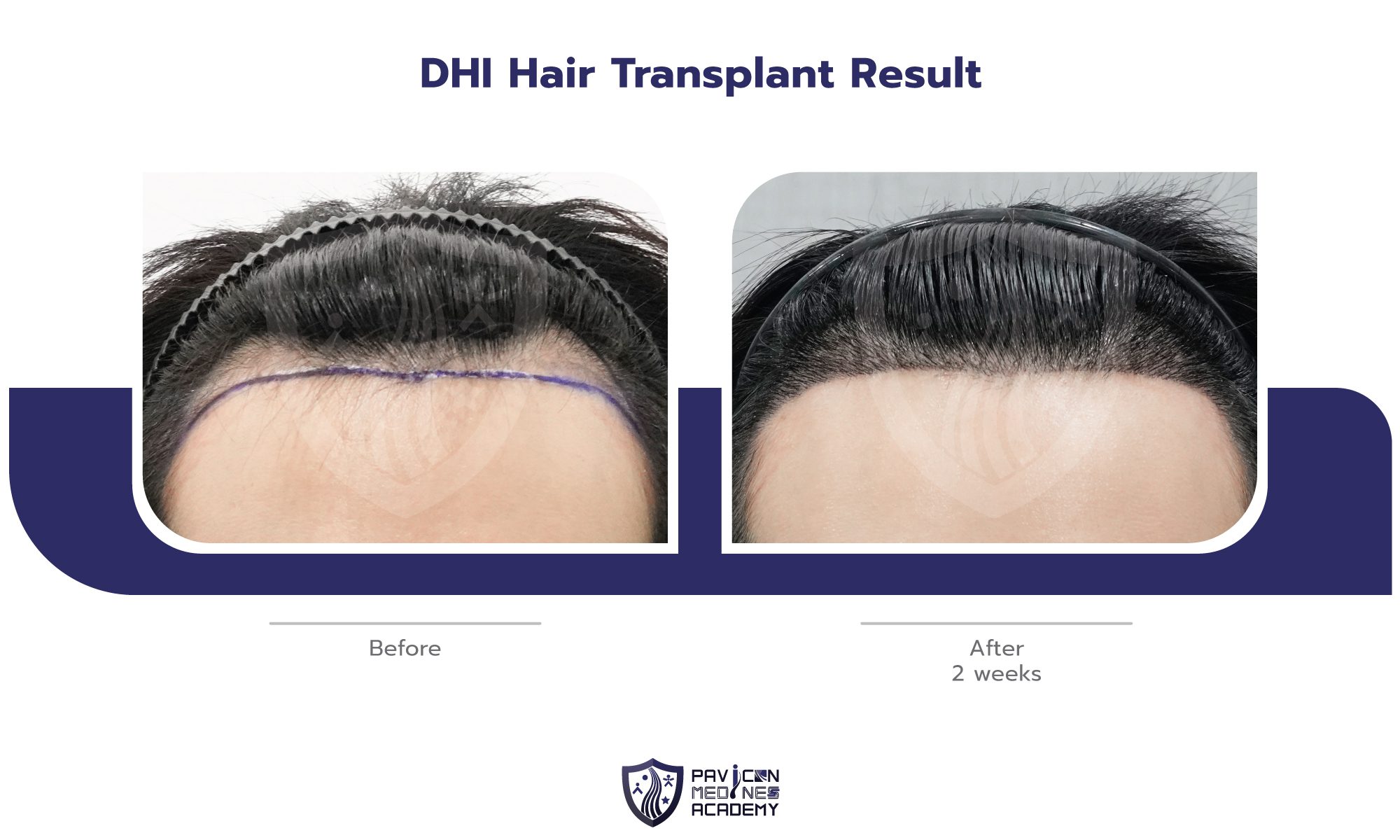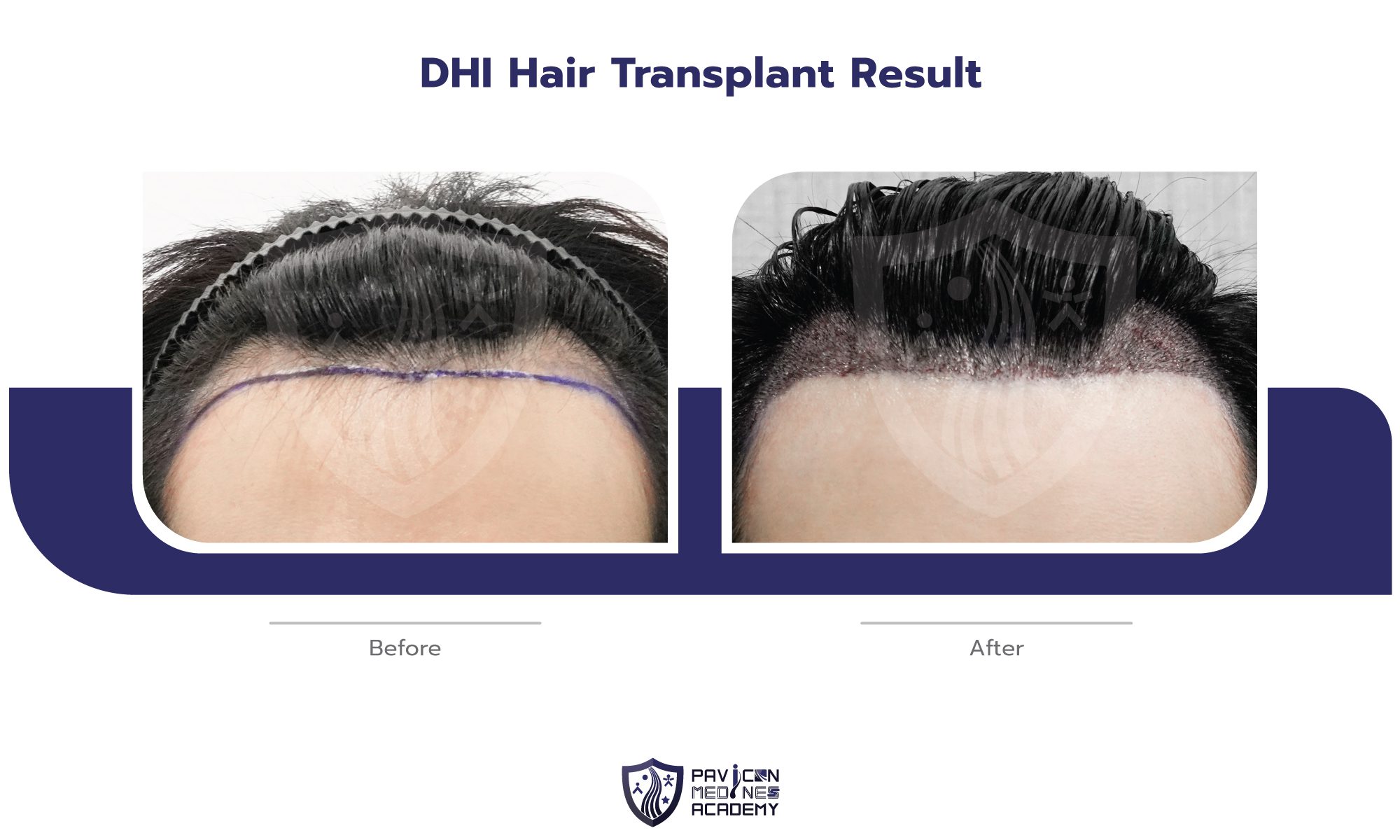DHI Hair Transplantation
What is DHI?
DHI (Direct Hair Implantation) is a hair transplantation technique developed from FUE method with the same procedure in graft extraction from the occipital area (donor area). In traditional FUE method, incisions are made at the recipient area using a needle and the grafts are inserted in such incisions using forceps. For DHI, each graft can be extracted and implanted in one go with a specific tool called Direct Hair Implanter.
Differences Between DHI and FUE Methods
Follicular Unit Excision (FUE) is a traditional hair transplantation method that use a needle to make recipient channels and forceps are used to place the hair grafts into such channels. The disadvantages of using needles and forceps are that the grafts cannot be implanted closely (20-40 grafts/cm2), time consuming and potentially damaging to the hair grafts. Therefore, there has been an invention and development of a device to help planting known as Direct Hair Implanter or shortly known as Implanter.
With the use of the Implanter, the hair surgeon can determine the depth and direction of the hair grafts, as well as increase the density of the hair grafts. Therefore, hair transplantation with the Implanter produces natural looking results, especially in creating a new hairline. It wouldn’t be good if we wanted to create a new hairline, but the transplanted hair grafts are not dense or had an unnatural direction.
This is also where the technique called DHI (Direct Hair Implantation) comes in. Although the procedure for extracting hair grafts is not different from the traditional FUE method, the implantation process is clearly different.
DHI Procedure
- Hairs at the back of the head called donor area which are resistant to DHT are trimmed or shaved to facilitate the graft extraction. The scalp is then injected with local anesthesia. You will be conscious throughout the process, but do not feel any pain.
- After the anesthesia takes effect, = a special drill with only 0.6 – 0.8 mm in diameter is used to carefully excise the hair follicles without affecting the grafts or damaging the surrounding hair follicles.
The medical team must carefully trim the grafts or separate excess fatty tissue from the hair grafts. Then the grafts with different number of hairs are separated and used to transplant in different areas. These grafts are immersed in a special solution to increase survival rates and growth rates.
In the implantation step, the trimmed grafts are placed in the Implanter and then directly implanted in the desired area (without any incisions as in FUE method). This leaves the skin free of multiple traumas and the grafts are less affected than the traditional FUE method. It is also possible to control the direction and angle for a more natural result than the traditional FUE method.
Pros and Cons of DHI Method
Pros
- No Scarring: DHI method does not require surgical removal of a strip of tissue from the occipital area like FUT method. This means that it does not cause a large scar at the donor area. A small drill with a diameter of 0.6-0.8 mm is used in DHI method to carefully extract the hair follicles as much as possible while protecting the nerves and blood vessels. With the special characteristics of the technology used, the wound heals quickly and does not require recovery period. In some cases, the patients can return to work within the same day.
- Natural-looking results: In DHI method, a modern, specialized tool called DHI Implanter is used to extract and implant the grafts in one go. It is also possible to control the depth, direction and angle for a more natural result. This method can provide precise and dense hair transplantation result. Implantation of grafts is therefore considered the key of DHI hair transplantation for a more natural result compared to the traditional FUE technique.
Cons
- Hair in the donor area needs to be cut or shaved as in FUE method. Therefore, this method is not ideal for patients who are unable to cut their hair or have to attend events frequently.
- Requires a large number of physician assistants – Since DHI method requires several physician assistants to prepare the implanter and usually 6-12 physician assistants are required. This is the reason why the cost of hair transplantation with DHI method is higher than that of a conventional FUE method which requires only 3 physician assistants.

